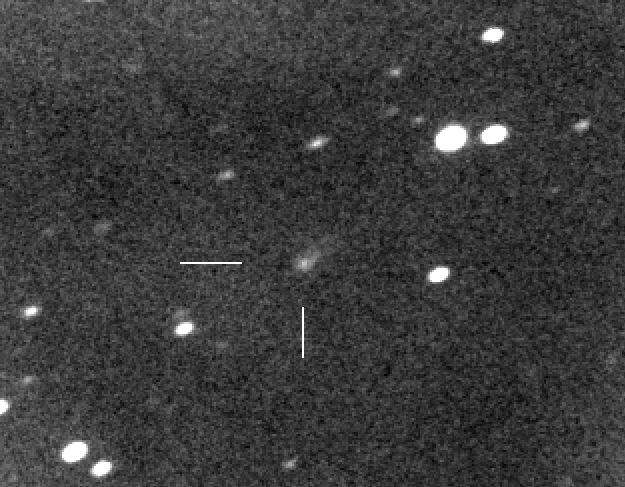
Comet ISON is not brightening as much as expected as it zooms toward the sun, an amateur astronomer has reported, dealing a blow to skywatchers hoping for a spectacular show from the icy wanderer during its close solar approach this November.
ISON, which almost immediately after its discovery last September was branded as a "comet of the century" candidate, now seems in jeopardy of completely disintegrating before skimming just 724,000 miles (1.16 million kilometers) above the surface of the sun on Thanksgiving Day (Nov. 28).
Since early June, ISON has been unobservable because of its close proximity to the sun in our sky. The comet is now slowly moving out of the bright solar glare and is becoming better placed for viewing in the morning, low in the eastern sky just before sunrise. [Photos of Comet ISON: A Potentially Great Comet]
When the comet vanished a couple of months ago, it had brightened very little if at all since the beginning of 2013. Astronomers had hoped that, while masked by the light of the sun, ISON would begin brightening at a more robust pace as it drew nearer to our star.
Unfortunately, that has not happened.
Early on Monday (Aug. 12), Arizona amateur astronomer Bruce Gary became the first person to pick up Comet ISON since it disappeared in early June. By stacking images acquired by an 11-inch telescope pointing just 6 degrees above the eastern dawn horizon, he succeeded in recording a fuzzy patch of light with a short tail at the comet's predicted position among stars that are as faint as magnitude 16.
Measuring the image, Gary — a retired radio astronomer and atmospheric scientist — came up with a total magnitude of 14.3 ± 0.2. That is at least two magnitudes fainter than most predictions, and more than a thousand times fainter than the dimmest star that can be perceived with the unaided eye.
Get the Space.com Newsletter
Breaking space news, the latest updates on rocket launches, skywatching events and more!
Gary’s observation does not bode well for ISON’s future performance, experts say.
“That the comet continues to appear as faint as it does implies that its intrinsic brightness (absolute magnitude) is low and that the nucleus is probably small and relatively inactive," said well-known comet observer John Bortle.
Bortle added that, in his opinion, "ISON has no chance of surviving its perihelion, based on my paper 'Post-Perihelion Survival of Comets with Small q' (International Comet Quarterly, Vol. 13, No. 3, July 1991)."
Of course, such forecasts are based on just one set of photographs. During the coming weeks, many other observations of ISON made by amateur and professional astronomers worldwide, as well as by orbiting satellites, will give us a much better assessment of ISON’s chances.
In light of this, Bortle stresses that he is hedging his bets: "I wouldn't fully commit to such until I see some actual visual observations reported."
We here at SPACE.com will have another update on ISON when more of those observations become available at the end of this month, so stay tuned!
Joe Rao serves as an instructor and guest lecturer at New York's Hayden Planetarium. He writes about astronomy for Natural History magazine, the Farmer's Almanac and other publications, and he is also an on-camera meteorologist for News 12 Westchester, N.Y. Follow us @Spacedotcom, Facebook or Google+. Originally published on SPACE.com.
Join our Space Forums to keep talking space on the latest missions, night sky and more! And if you have a news tip, correction or comment, let us know at: community@space.com.

Joe Rao is Space.com's skywatching columnist, as well as a veteran meteorologist and eclipse chaser who also serves as an instructor and guest lecturer at New York's Hayden Planetarium. He writes about astronomy for Natural History magazine, Sky & Telescope and other publications. Joe is an 8-time Emmy-nominated meteorologist who served the Putnam Valley region of New York for over 21 years. You can find him on Twitter and YouTube tracking lunar and solar eclipses, meteor showers and more. To find out Joe's latest project, visit him on Twitter.











